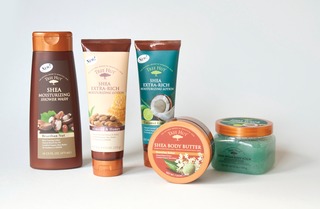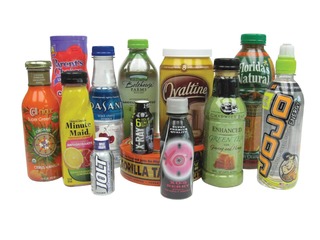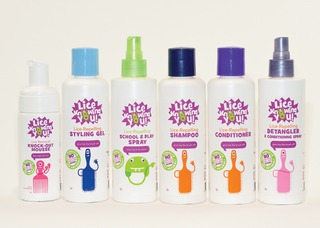It's Not Your Father's Packaging Market
For the innovative converter, the packaging market is a top growth area within the graphic communications industry over the next several years. In fact, it is predicted to be a top growth area over the next several years.

For the innovative converter, the packaging segment provides a host of opportunity. In fact, according to data garnered by industry consultants and associations, the packaging segment—which includes flexible packaging, tags and labels, folding carton, and corrugated boxes—it is a top growth area within the graphic communications industry over the next several years.
At least for the near future, packaging—unlike magazines or sales collateral, for example—can't be digitized. The segment has its challenges, of course, as packagers looked to keep pace with advances in technology and market trends.
And the Customer Is...
The retail environment is changing. Major supermarket chains are more involved in brand building, stocking those already crowed grocery store shelves with their own private labels. In Europe, private labels account for 50 percent of the label market; in the US it is currently at 20 percent and growing.
"The key today is that retailers have the leverage; 15 to 20 years ago, it was the CGP companies that had the leverage," says Stuart Brownell, Kodak Global Packaging Market Segment Manager. "In the future, we believe it will be the consumer. They will have so much control, with things like QR codes, which allows them to check pricing and availability anywhere, anytime."
Brands, looking to stand out among the crowd, are looking for new and innovative packaging. Shrink sleeves labels—with their ability to image bold graphics on a full 360 degrees of the label real estate, while adhering to nearly any shape or size container—are gaining traction, with growth estimates reaching seven percent annually, as compared with less than four percent for the overall label market.
Packaging Graphics in Pawtucket, RI has come up with its own program to trigger consumer response. Teaming up with SCENTISPHERE of Carmel, NY, it is offering the Rub’nSmell scent application for use on packaging, as well as catalogs, direct mail and coupons. Packaging Graphics can embed a combination of 60 distinct smells during the print process.
“Using sharp scents is not new, but the method we offer is a new-and-improved version. The technology available now can make an immediate impression with a unique, distinct scent that is very critical to consumers purchasing habits,” says Nick Carafa, Executive VP – Sales, Packaging Graphics.
Packagers are serious about implementing technology that streamline efforts and make continuous, measurable improvements within the facility. "Color management along with process controls is making headway among flexo printers. Also, we have seen a 50 percent increase in adoption of our Studio Tools technology and a huge adoption of web-based collaboration tools for virtual communication of the visual image," says Larry Moore, Esko director of software services in North America. "Packagers are looking to adopt more automated methods of producing work. The economy is encouraging people to seek out the most cost-effective methods to get the job done."
These tools are a necessity, as CPGs and retailers look to use specialty inks, metallic inks, holographic—all of the special effects," notes Jayson Hazelbaker, Production Manager, Digital Media Group, Inc., a Cincinnati-based global 3D image creator for brands.
Ramping Up the Quality
This preference for the "WOW" factor helps explain why flexography is king among packaging printing. Flexography, which until fairly recently had a bad rep for producing low quality work, has fully come of age, especially with front-end technology, such as Esko's HD Flexo and Kodak's Flexcel NX, helping to pump up the quality levels to gravure standards at a fraction of the cost and considerably faster makeready.
"Flexo has always offered the high speed and wide webs; whether it could offer the quality level was the question," says Brownell. "In the last several years, the quality has improved exponentially."
Not only can printing and converting be performed almost entirely inline using flexography, the process works on just about every substrate, from film to paper, to board, rigid plastic, metal, and glass.
Flexography is projected to remain the leader in packaging printing for the foreseeable future. In a report commissioned by PRIMIR, Benchmarking and Worldwide Market Trends for Flexographic Printing, LPC forecasts four to five percent annual growth for flexography through 2013, with sales representing more than 60 percent of the $440 billion printed packaging market.
Digital Plays Its Hand
Digital printing is making a play to be the production process of choice. Industry experts agree that packaging is the biggest analog-to-print opportunity in the graphic communications market. The numbers are telling: According to InfoTrends' 2010 Market Assessment: Color Digital Printing in Packaging and Label Converting, digital package printing will grow 15.7 percent annually, rising from $1.8 billion in 2009 to over $3.7 billion in 2014.
Currently, the only area within the packaging arena where digital printing has made significant inroads is in labeling production, but that will change as packagers identify market segments where there is a fit, and print engines continue to improve.
"The next frontier in package printing is going to be digital." says Brownell. "Kodak's technologies in this area allow us to go wider and faster, and it will be more economical and sustainable, compared to what exists on the market today."
Kodak, already a presence in packaging prepress and plates, is now looking to move continuous inkjet stream technology into packaging printing.
"In the future, there will be more of a level comparison between offset, flexo and digital—the speed will be there, the width will be there," says Brownell. "The dialogue will be what fits my particular business best."
For some, that type of dialogue is already happening. "We are really seeing digital printing as a total lifecycle solution, which can go from mock ups and prototypes on the press through full production," says Kathy Popovich, marketing director, Innovative Labeling Solutions.
"The HP Indigo WS6000 digital press, with its print frame size and faster speed, have allowed for better economics," adds Popovich. The WS6000 digital press operates at 98 fpm with a print frame size of 12.48 x 38.58 inches. The Cincinnati-based packager, which installed its first digital press in 2005, was a 2008 beta site for the Indigo WS6000; in 2011 it traded in its HP 4500s for two additional WS6000s.
"In 2008, digital accounted for 15 percent of our total product output; now it is about 50 percent and going up," says Popovich. "We do everything on the Indigo—labels, flexible packaging, shrink sleeves, even cartons."
Targeted Packaging Gaining
Targeted and more customized packaging are gaining ground, a strong factor in promoting digital printing. Brands are incorporating labels and packaging into their marketing mix, driven, says Popovich, by consumer demand. "Today's consumer is used to a lot of interaction and engagement; the digital platform allows that interaction to happen," she says. "Brands are creating one-to-one relationships with consumers as a way to build loyalty. On mykleenixtissue.com, for example, consumers can custom design their own tissue box."
"In grocery stores there are more SKUs than ever before, causing shorter and shorter product runs," acknowledges Brownell. "Versioning is becoming a big trend in packaging; the products on the shelf can be designed for specific regions, with specialized decorations."
The arsenal of presses used at Hammer Packaging, North America's second largest private packaging company, reflects the changes in the marketplace.
"We need large format and small format presses because the volumes are changing," says James E. Hammer, president and CEO of the Rochester, NY-based company. "We used to just do large format, but there are so many more line extensions with more SKUs. Bud Lite, for example, used to have one brand and one flavor; now there are between 12 and 15 different flavors distributed to different markets."
Over the last 10 years, Hammer has made a point of investing 10 percent of its annual sales into new technology. Its installation of a variable sleeve web offset press was the first of its kind in North America. It was also the first North American customer to purchase Heidelberg's UV-capable Speedmaster CX 102 press. Hammer has two additional Heidelberg presses and a KBA 64" large format press.
Digital is also on the horizon, notes Hammer. "We have not pulled the trigger but we are seriously looking at digital," says Hammer. "In packaging, it's tough to get a good ROI using digital. We have looked at this for quite awhile, but we believe we've identified a market where it will be a good fit."



